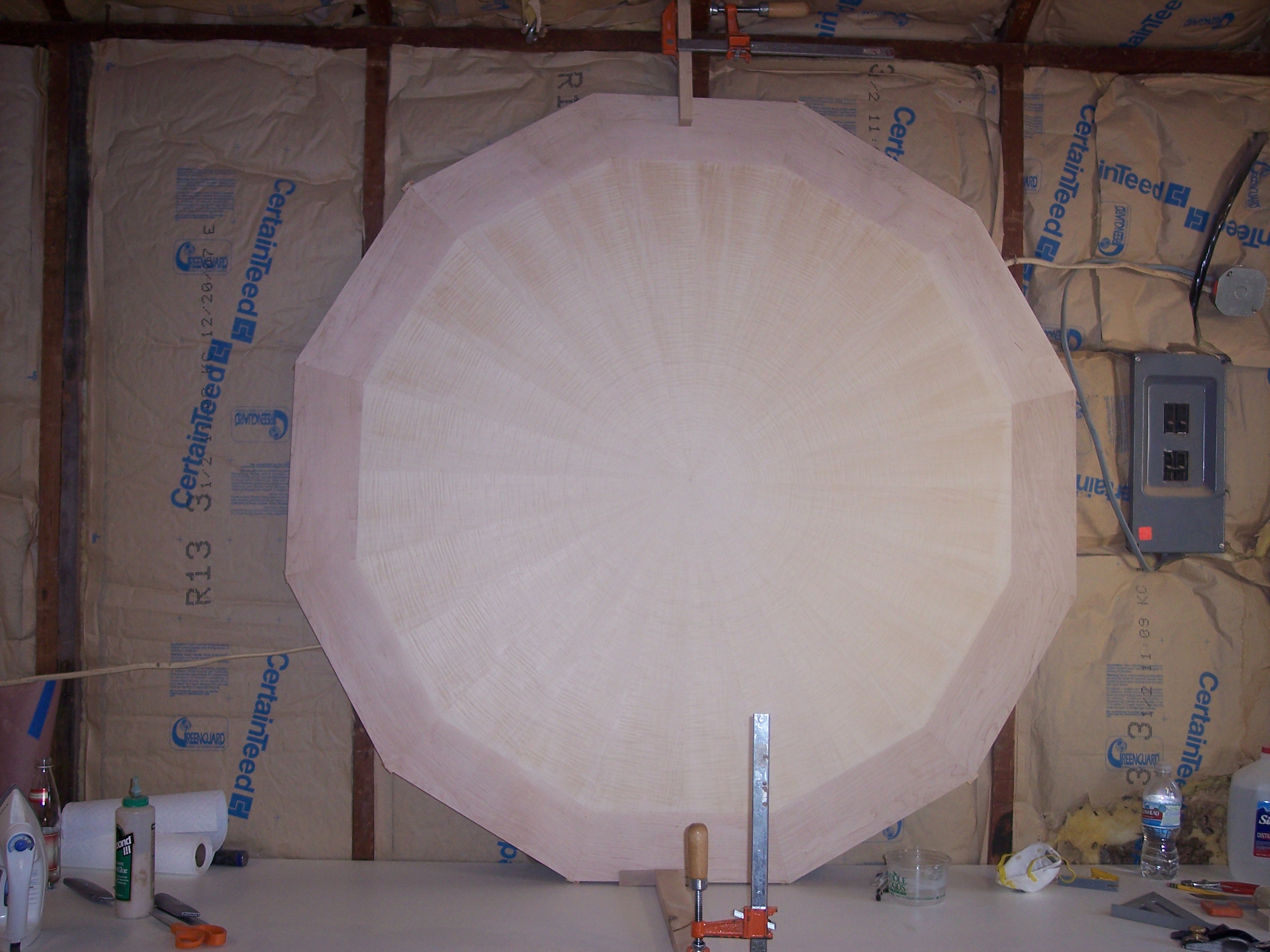Question
I'm building a round table out of an MDF veneered panel. The panel will be edge banded with 5/4 x 6" maple. The diameter is 5'. I want to attach the apron to the solid edge and attach cross members to strong back the panel, using screws. Is wood movement an issue here? I could put all of the frame on the MDF, but this table will be heavy. I could see the edge band breaking off the MDF if anyone had to move or lift the table.
Forum Responses
(Furniture Making Forum)
From contributor J:
Any wood movement issues you have will be unrelated to the way the top is connected to the frame. MDF does move a little with humidity changes, as will the solid edging, so the joints between pieces of edging might not remain absolutely tight. I would not rely on glue alone here - some biscuits between edge segments, and between the edge and MDF center, would be appropriate. If you do a good job of that, I doubt you have much to worry about in terms of it being broken when (not if) it is moved.
I am not sure why biscuits will help as they are used for positioning a joint and do not add to the strength. Even so, the stress developed will exceed the strength of any joint. To use cross pieces, as you suggest, the screws must be in slotted holes so that they can move; do not drive the heads into the wood which would prevent movement. Bottom line: wood movement is an issue and expect some opening of the joints due to the design and not to the construction.
2. While I understand that biscuits don't add strength to edge-grain joints when gluing up a slab, I'm pretty sure they can add quite a lot of strength to end-grain - to - end-grain joints such as those between segments of the ring around the table, as they act much like loose tenons.
Here is my response:
1. I am assuming that the ring of hardwood is 6 inches wide. So, although the length of a series of segmented pieces will not change, the wood will shrink or swell in width...about 1% for a 4% MC change or about 0.06" or 1/16". This would be on both edges.
2. Good point indeed. I was thinking only of side to side joints when I wrote the response - biscuits joining the rim to the core and not the individual pieces in the rim. An additional thought is that a good moisture vapr resistant finish should be used and applied to all exposed wood evenly and at the same time to help avoid moisture differences that can cause warp.
Hypothetically, if there were 10 segments cut from 6" wide maple, then each would occupy 36 degrees of the circle, with about an inch and a half outside the chord line and four and a half inches inside the chord line. Seasonal shrinkage across four and a half inches of maple might be about 1/32," which is the sort of gap I'd expect to eventually develop if the table were built in a humid season. I suggested biscuits between segments and MDF so that a mechanical interlocking joint would remain even of the segments loosened from the MDF. However, since this particular table is apparently being built in the wintertime, it seems conceivable to me that such gaps between MDF and segments may never develop.
